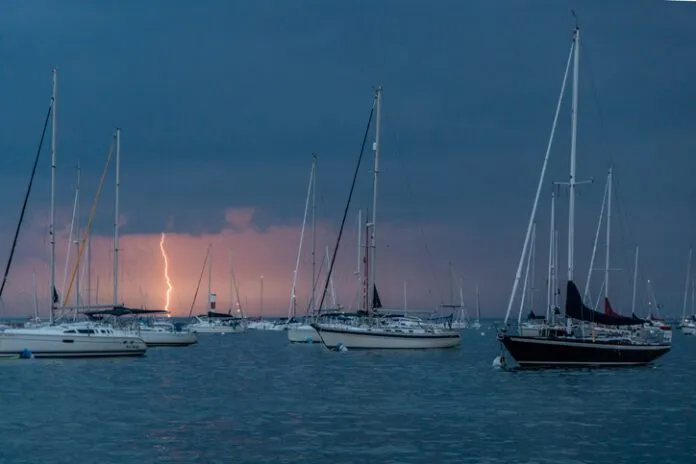Is any purpose served by “interconnecting” all large metal objects on board?
Connecting large metal objects on board (called bonding) may help protect some gear, but is no guarantee. Surge suppressors wired between the positive and negative leads, and to ground, may help save some electronics. Suppressors are normally nonconductive, but when the “clamping voltage” is exceeded by a strike, the suppressor becomes conductive and shunts the charge to ground. They will not, however, have any effect on induced voltages cause by magnetic pulses, nor will they protect from the second zap because they are one-shot devices (like a fuse). But their greater value is in protecting crew, who may have no choice but to continue operating the boat. If metal objects are not interconnected, and a person touches two of great voltage difference, say the helm and transmission lever, a lightning strike will try to complete the circuit through his body. At the signs of an approaching thunder storm, the safest strategy is to secure the boat and go below, even if your boat is grounded and bonded.
For more information on installation of marine electrical systems, purchase Marine Electrical Systems, Vol. 2: System Installation from Practical Sailor.
Or, buy the entire Marine Electrical Systems six-part series!




































